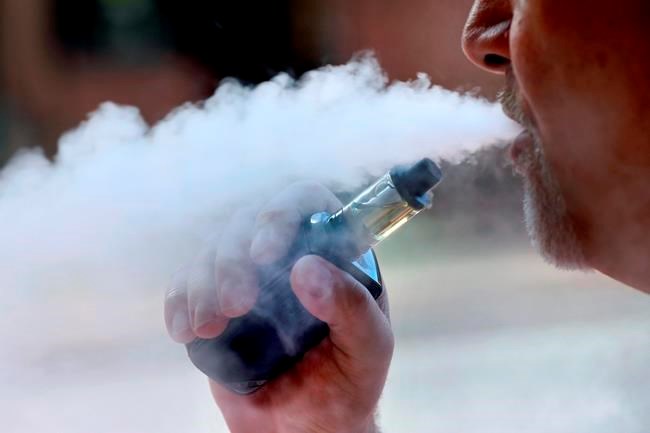TORONTO — The price of vaping products is set to rise in Ontario, with the province planning to add a tax as a way to reduce the prevalence of vaping, particularly among young people.
Finance Minister Peter Bethlenfalvy's fall economic statement on Thursday contained an announcement that Ontario will be adding a provincial excise duty to vaping products, which would double the current federal duty rates.
"Research suggests youth vaping can lead to smoking," the government wrote in the fiscal update, citing research in the Canadian Medical Association Journal that found one in six non-smokers who use vaping products will start smoking cigarettes.
"Public health experts, the World Health Organization, and organizations like the Canadian Cancer Society have stated that taxation is a critical public policy tool to reduce vaping, especially among young people, and helps manage the associated health risks."
The combined tax would see manufacturers and importers paying $2 per two millilitres of vaping liquids for the first 10 millilitres, then $2 per 10 millilitres for volumes beyond that.
These types of taxes are fairly new, but have proven effective, said Lesley James, the director of health systems for the Heart and Stroke Foundation in Ontario.
"There are almost 100 jurisdictions around the world who have introduced vape taxes and the results from those so far are showing a similar outcome, so declines in consumption and particularly among price-sensitive youth," she said.Â
"That's the group we're really trying to target to deter initiation and increase quit attempts."
Emerging evidence suggests vaping can have negative consequences for the respiratory system, mental health and blood pressure, James said.
In 2021-22 about 21 per cent of Ontario students in Grades 10 to 12 reported vaping, James said, though that is down from 26 per cent in 2018-19. However, there has been a small increase among younger students, going from 7.6 per cent to 8.5 per cent, she said, citing data from the Canadian Student Tobacco, Alcohol and Drugs Survey.
Meanwhile, the Convenience Industry Council of Canada criticized the new tax, and urged the government to instead crack down on contraband tobacco.
"Doubling the taxes on vape products disincentivizes adult tobacco users from making the switch to a less harmful alternative while increasing the demand for cheaper, illegal alternatives sold online, often without age verification," the council wrote in a statement.Â
"Given forty-eight cents of every dollar a convenience store makes goes to taxes, any new taxes on products sold in our stores threatens the viability of our businesses in Ontario."
The federal government implemented a tax last fall, and since then British Columbia, Saskatchewan, Newfoundland and Labrador and Nova Scotia have implemented provincial taxes.
The provincial government said it would have projections on how much revenue the tax would generate for Ontario "in the coming months."
This report by The Canadian Press was first published Nov. 3, 2023.
Allison Jones, The Canadian Press




